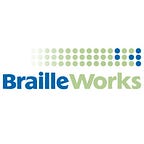Tuning-in to Adaptive Instruments and Musical Scores
At Braille Works, we prepare documents for people with diverse levels of impairments. That includes visual impairments, motor skills impairment, and conditions that make it tough, or impossible, to read a standard print document. The experience of working here has opened my eyes to experiences that I may never fully understand. As a sighted person, I almost always take for granted looking at a document and reading it. It rarely enters my train of thought that “wow, I can see this!”. That’s why accessibility has to be an intention in whatever you do, even in adaptive instruments.
I am also a musician and play the piano and the guitar. In my limited imagination, I thought learning these musical skills was difficult. But, I never considered how hard it would be to have an impairment that affected my ability to play the instrument. Thankfully, perspective is a good teacher!
Play Music
Music, for me and many others, is more than making sounds with an instrument. It is a channel for emotions, a creative process, and deeply relaxing. Musical expression comes in many forms and goes beyond notes on a scale. Percussive instruments like drums, claves, cowbells, and cymbals add emotion to a musical score. The cadence and force on the beat can bring a sense of urgency to the song. While a slow beat and soft strike on the instrument can bring a calm feel to the song.
Make Music
Every instrument brings its own thing to a song. Socially, playing music with other people is one of the most enjoyable things I do. Music is found in virtually every culture and is a binding force that brings a true sense of community. That is to say, I can’t imagine a life where I wouldn’t be able to play music. It is an essential part of my life.
Imagine then, having the creative impulse and wanting to make music, but not having the physical ability to use traditional instruments. It would madden me.
This got me thinking about the process of learning to play an instrument with a physical impairment of any kind. For example, how would one with blindness learn to read music? If you can’t see the page, you can’t read the notes. How would someone without arms make music when most instruments I have found involve pressing keys, valves, or stings? How about a person with quadriplegia?
That led me on a search for options to traditional instruments and musical notes.
Take Notes on Adaptive Instruments
To my delight, there are a host of instruments that allow someone with disabilities to create music. You can find hands-free, breath-powered instruments for motor impairments. And, thanks to special switches taken from home appliances, fixtures, toys, learning devices, and different electronic gadgets, new musicians can use adaptive instruments. For example, percussion instruments use hands, feet, or switches to activate a drumstick or other means for striking the instrument.
Music is within reach for most everyone. However, many music stores don’t carry adaptive musical instruments. An internet search will bring you companies and people who make these instruments and special switches.
For people who are blind, braille music notation makes musical scores accessible. There are specific rules called the New International Manual of Braille Music Notation. Similarly, for partially sighted musicians or those with reading disabilities, Modified Stave Notation () makes music accessible. MSN involves a mix of a non-white four background, thick lines, larger symbols, or a color change for each note.
This link to an adaptive musical guide may be a good start for adaptive musical instruments.
A Music Stand
My search was rewarding. After that, I learned that specific abilities don’t limit musical expression. Anyone wanting to play music can find an adaptive instrument to express their talent. So, let’s keep the music playing!
This post was written by Glen Schubert.
Originally published at https://brailleworks.com on October 1, 2020.
